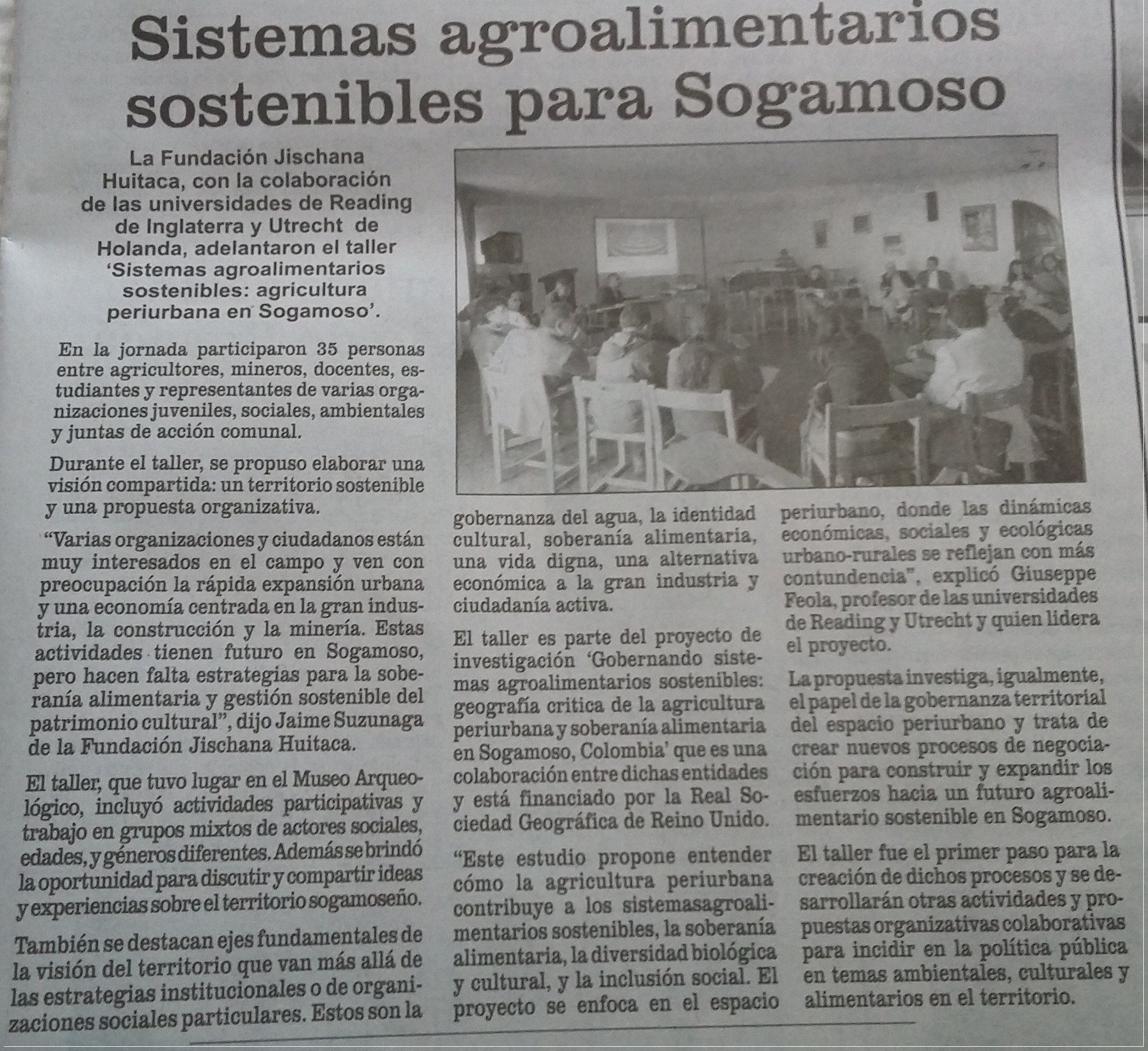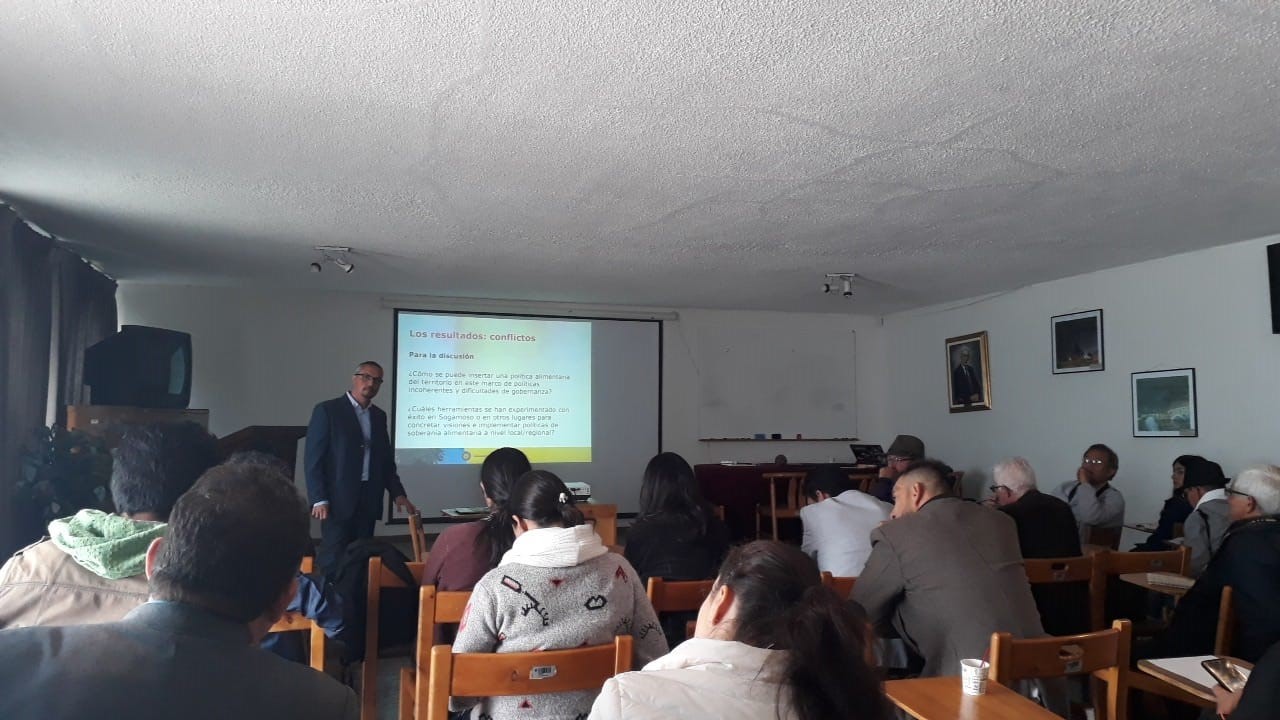This blog post was originally published in Spanish on the web platform LA. Network/ Este artículo fue publicado en castillano en la plataforma LA.Network.
A study reveals the subtle and ‘ordinary’ mechanisms of urban land grabbing in peri-urban spaces of small Colombian cities, and argues that policy incoherence and governance problematics drive land grabbing in peri-urban spaces.
We are not used to thinking of Colombian and Latin American cities as sites of land grabbing. We commonly associate the term land grabbing to the dispossession of locally owned or locally controlled land in rural spaces, at the advantage of large actors such as multinational companies and governments, which might appropriate land through the use of violence. Moreover, when we think about land grabbing in Colombia and Latin America, we usually associate it to large infrastructures, the extraction of natural resources, cash crop plantations, environmental conservation, and armed conflict. Land grabbing has generated environmental injustices, exacerbated social vulnerability and conflict, and generally disrupted the social fabric of local communities in Colombia and regionally.
Yet, land grabbing also occurs in urban areas, and especially at the urban border (peri-urban space), where urban expansion, agriculture and other land uses often clash in the name of diverging visions of development. Land grabbing in urban contexts is often more hidden, subtle and difficult to detect. Land grabbing in the city usually involved the appropriation of smaller areas of land at any one time, does not involve large, visible actors such as multinational companies, or national governments, nor does it necessarily occur under the use of armed force. For this reasons urban land grabbing has largely remained overlooked in Latin American cities.
A recent study conducted in the Colombian city of Sogamoso has brought some of those subtle and so far mostly hidden processes to light. In this city, urban expansionism, agriculture, mining and ecosystem conservation compete for the same, relatively small peri-urban space. Many peri-urban farmers have seen their land become unsuitable for farming as a result of mining practices that have damaged soil and water resources. Others face environmental conservation laws that essentially forbid most farming practices in ecologically valuable high-mountain páramo ecosystems that surround the city. Similarly, peri-urban farmers and residents have seen their land and property become too expensive or unsuitable for farming as a result of urban speculation and changing land use designation. In these cases farmers and residents have ended up unwillingly selling their land, which in many cases had depreciated, and/or have lost their livelihood. While land appropriation in peri-urban spaces is often of small scale, it is very impactful on the livelihoods of the citizens involved, who tend to be the already less powerful and politically unrepresented.
The study shows that the combination of incoherent policies and governance problematics is at the root of land use conflicts and land grabbing in the city’s peri-urban space. In Sogamoso, for instance, national mining and conservation legislation clashes with local planning (land classification). Local policies within or across sectors (for example: housing, agriculture, tourism) also often pursue incompatible goals (e.g. climate change mitigation and support for the extractive industries), or employ contradictory instruments (for example, regulations and incentives). This policy incoherence creates uncertainty about which piece of legislation, institutional actor, or interest group, will prevail and, consequently, it reinforces a generalized sense of injustice and distrust of the authorities. This situation generates social tensions which individuals and groups tend to resolve in ways that lie outside the democratic, transparent, deliberative governance system. The situation is compounded by the existence of various governance problematics: lack of reliable and up-to-date information (e.g. databases) on the state of the city, lack of technical capacity in the local governments, political short-termism, clientelism, and a poor civic participatory culture. This often results in more powerful, better organized or informed individuals and interest groups to acquire advantages, also in the form of land appropriation.
The case of Sogamoso may be unusual for the simultaneous convergence not only of urban expansion and agriculture, but of four distinct and to an extent incompatible land uses: urban expansionism, agriculture, ecosystem conservation and mining. But this case is not at all exceptional for what concerns the ‘ordinary’, subtle character of land appropriation, and the role of policy incoherence and governance problematics as factors of urban land grabbing in the region. In fact, it is rather illustrative of the pitfalls of territorial governance and policy incoherence which have been observed (albeit with some notable exceptions) in much of Colombia and Latin America.
Therefore, urban land grabbing should be on the agenda of policy-makers and civil society organizations alike as a serious issue to be tackled to support urban agriculture, and to reduce social conflict, injustice and vulnerability in the city.
The study cited in this article is a collaboration between the Department of Geography and Environmental Science at the University of Reading (United Kingdom), the Copernicus institute of Sustainable Development at Utrecht University (the Netherlands), and the Fundación Jischana Huitaca (Colombia). The study was funded by the Royal Geographical Society (with IBG) through the Environment and Sustainability Research Grant 2017/1. The study (in English) can requested via email at: g.feola@uu.nl or downloaded at this URL: https://www.sciencedirect.com/science/article/pii/S0016718519301654










